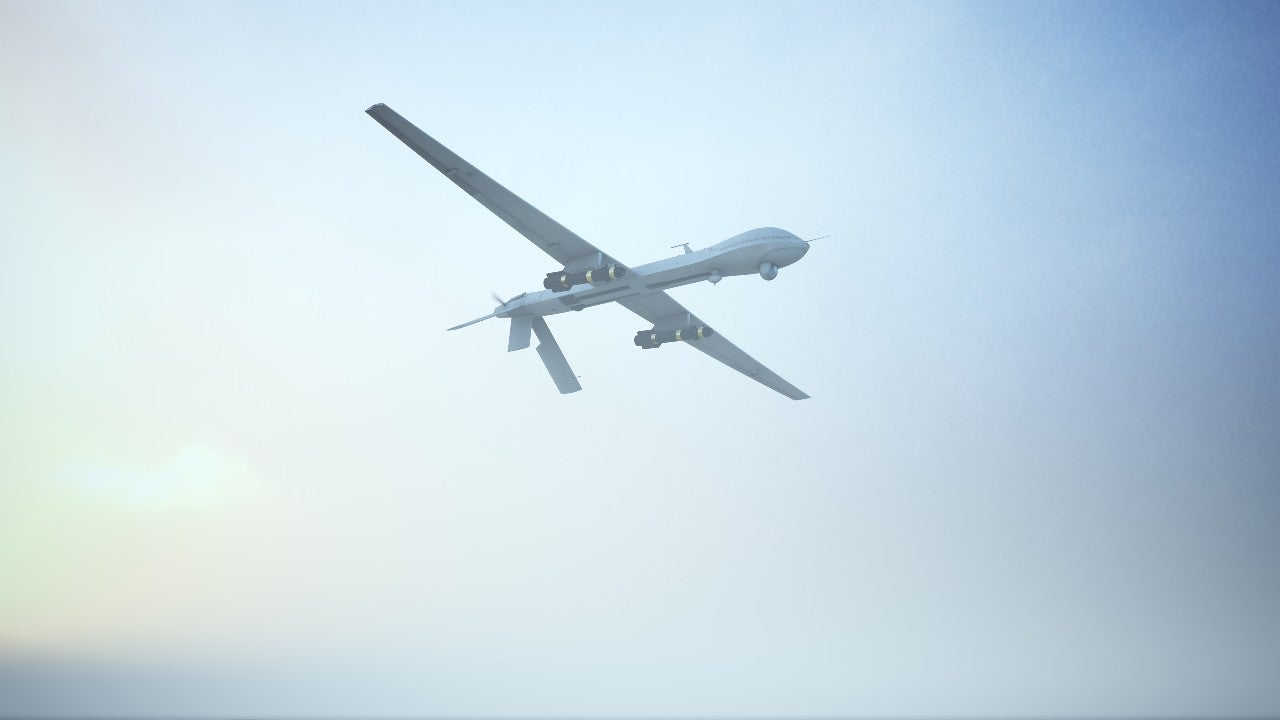Traditional land-based uncrewed aerial vehicles (UAVs) are being used to support maritime domain awareness task forces, extending coverage beyond the range covered from a surface ship, due to their long endurance and comprehensive mission payloads. Countries across the globe are investing in the procurement, research, and development of UAVs for maritime operations. For example, the British Armed Forces is seeking innovative and cost-effective UAV solutions to enhance their logistic end maritime operation capabilities.
In November 2020, Malloy’s T-150 heavy lift drone developed for the British Royal Marines to enhance their reconnaissance and logistic transport capability was tested in Cyprus. At this year’s DSEI in London, UK, Malloy’s showcased their T-650 all-electric heavy lift unmanned aerial system (UAS) with a stingray lightweight torpedo attached to its frame. BAE Systems and Malloy Aeronautics plan to explore developing their UAV for military, security and civilian customers.
In July 2020, SKELDAR V-200 unmanned aircraft was selected as part of the naval mine countermeasures capability replacement for the Belgian and Royal Netherlands navies, which will supply twelve mine hunters, each equipped with an Autonomous Underwater Vehicle (AUV), Remotely Operated Vehicle (ROV), Unmanned Surface Vehicle (USV), UAV and drone systems (Toolbox). In addition to this, General Atomics Aeronautical Systems (GA-ASI) tested its MQ-9A Block 5 UAV for Anti-Submarine Warfare (ASW) capability on 24 November 2020, deploying BT (bathythermograph) and sonobuoys successfully to detect and continuously track an MK-39 EMATT (Expendable Mobile ASW Training Target) over three hours.
Captain (Rtrd) Nurettin Sevi, Turkish Navy, Aerospace and Defense analyst at GlobalData comments: “UAVs have become proliferated rapidly in the naval domain and are becoming a standard tool due to their low-cost means of conducting intelligence, surveillance and reconnaissance (ISR) missions. Enhanced endurance, data processing, and communications capabilities have broadened ISR UAV use in maritime roles. Compared to manned defence systems such as maritime patrol aircraft, UAVs have a longer flight time; the MQ-9B SkyGuardian / SeaGuardian can fly for 30 hours without refuelling, while a manned aircraft’s fuel time is up to 12 hours.
“The majority of today’s UAVs are designed for ISR, search and rescue and constabulary missions. Advanced navies seek to enhance their utilization of UAVs in logistic transport and other naval operations such as Anti-Submarine Warfare (ASW), Anti-Surface Warfare (ASUW), Mine Counter Measure (MCM) and Electronic Warfare (EW). Currently, vertical take-off and landing (VTOL) UAVs have become a new trend for logistic purposes. For instance, Leonardo‘s AWHero, The Aero360 Hybrid, Malloy’s T-150 and T-650, Laflamme’s LX300, Anavia’s HT-100 and others can be leveraged for logistics transport in addition to ISR missions.
“Besides these VTOL UAVs, Boeing has developed a tanker UAV, the MQ-25TM Stingray, coordinating with the US Navy, Boeing is producing the first seven MQ-25 aircraft. The US Navy aims to buy more than 70 MQ-25 aircraft to help extend the range of the carrier air wing. Boeing announced in September 2021 they are to build a new facility in Illinois US to manufacture the Stingray, further highlighting the importance of the system.”




